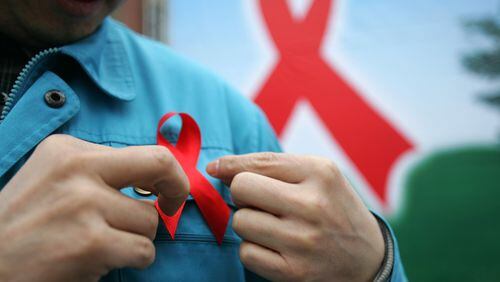Officials worldwide are pushing for HIV/AIDS awareness, testing and treatment access as health officials mark World Aids Day on Thursday.
The Centers for Disease Control and Prevention estimates that 36.7 million people across the globe are living with HIV/AIDS. The illnesses claim more than 1 million lives each year, the agency said.
However, the World Health Organization noted that in 2015 the epidemic claimed fewer lives than it had at any point in nearly two decades. Health officials credited the expanded use of antiretroviral therapy, which has brought the number of HIV-related deaths down by 45 percent since 2005.
"With access to treatment, people living with HIV are living longer. Investing in treatment is paying off," said Michel Sidibe, executive director of the Joint United Nations Programme on HIV/AIDS (UNAID), in a statement Thursday. "AIDS is not over, but it can be if we tailor the response to individual needs at particular times in life."
The agency is behind what's known as the "90-90-90" goals, which aim to raise the number of people who know their HIV status, get them treatment if needed and have that treatment be effective.
"The success we have achieved so far gives us hope for the future, but as we look ahead we must remember not to be complacent," Sidibe said. "We cannot stop now."
In America, health officials encouraged leaders to strengthen commitments to end HIV infections with the day's theme, "Leadership. Commitment. Impact."
About 39,500 people were diagnosed with HIV infection in the United States last year, health officials said. More than 1.2 million people are living with HIV – and about one in eight don't realize it.
Between 2005 and 2014, new HIV diagnoses fell by 19 percent, according to the CDC.
"We are winning against the AIDS epidemic, but we are not seeing progress everywhere," Sidibe said.
Health officials estimate that 2.1 million people are newly infected by HIV annually, a majority of whom live in sub-Saharan Africa. Despite the large number, the World Health Organization said the number of new infections was at its lowest point in the last 25 years.
Countries are working toward goals set by UNAIDS. By 2020, the health organization aims for 90 percent of all people living with HIV to know their status, 90 percent of all people diagnosed with HIV infection to receive antiretroviral therapy and 90 percent of all people who are getting antiretroviral therapy to have viral suppression.
The push is credited with revving up global efforts to fight HIV. As of June 2016, 18.2 million people were receiving antiretroviral therapy for HIV infection, up from the 7.5 million receiving treatment at the end of 2010, according to the CDC.
World AIDS Day was the first-ever global health day recognized by officials. It was launched in 1988 and is held on Dec. 1 each year to increase awareness, show support to those living with HIV and remember those who have died.






